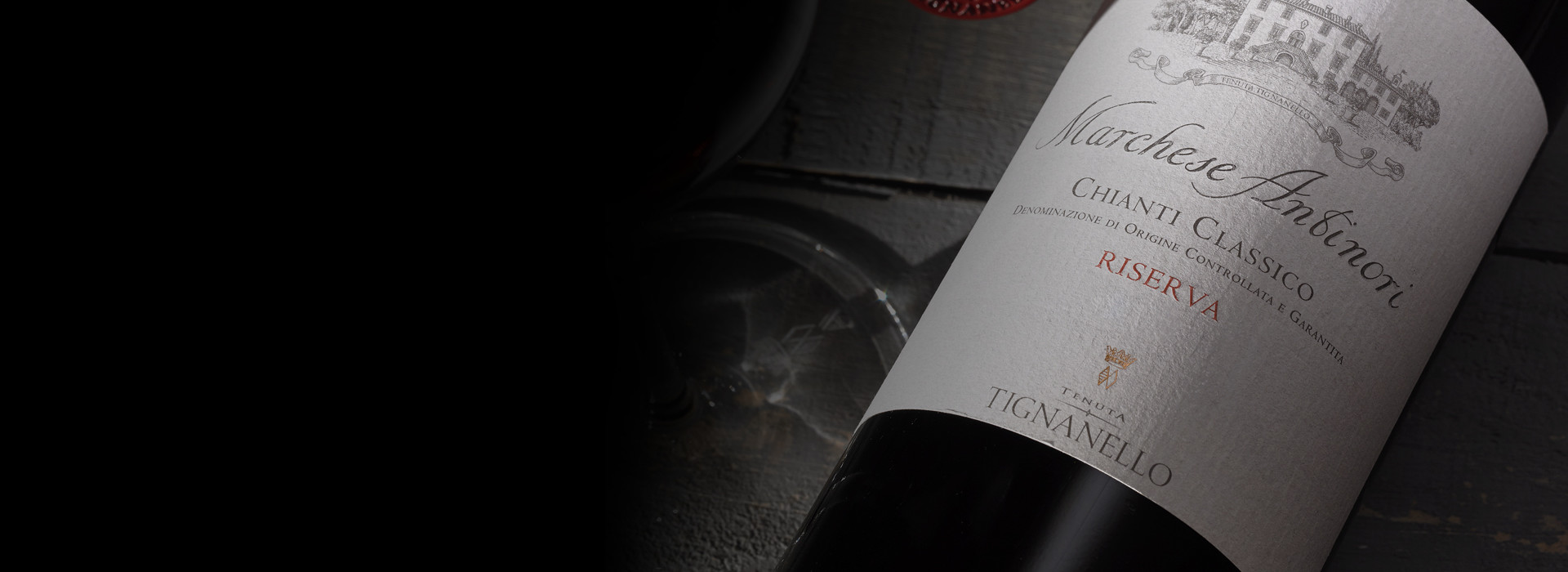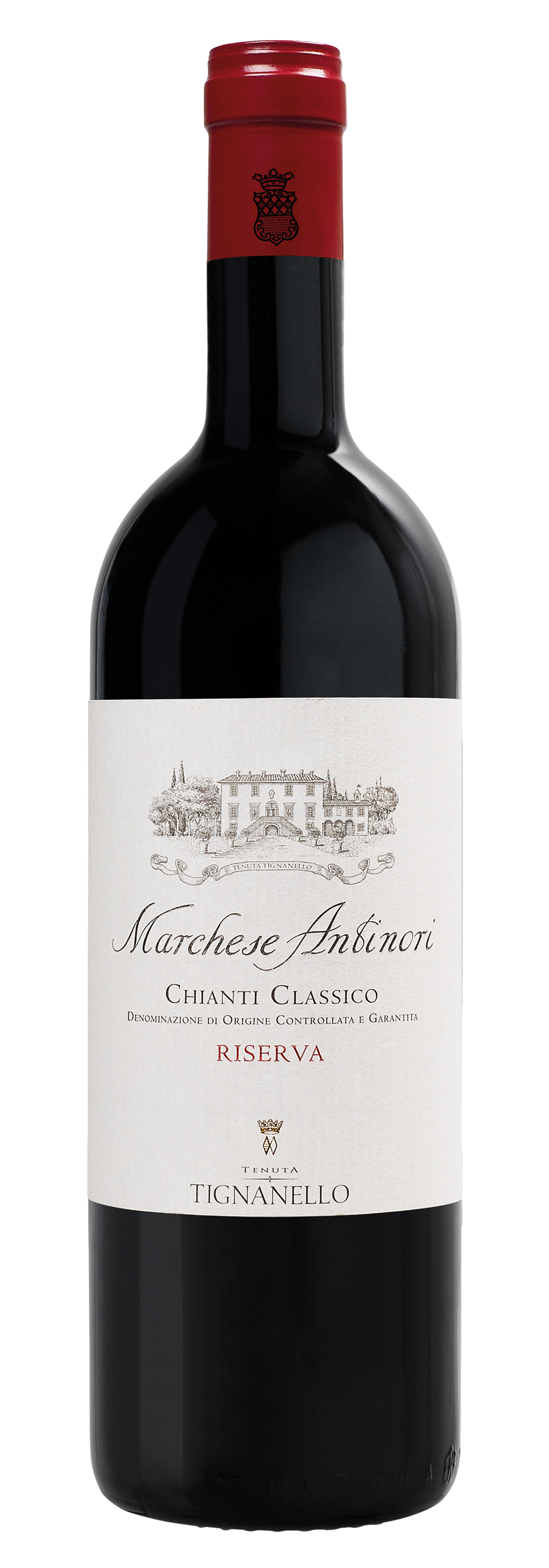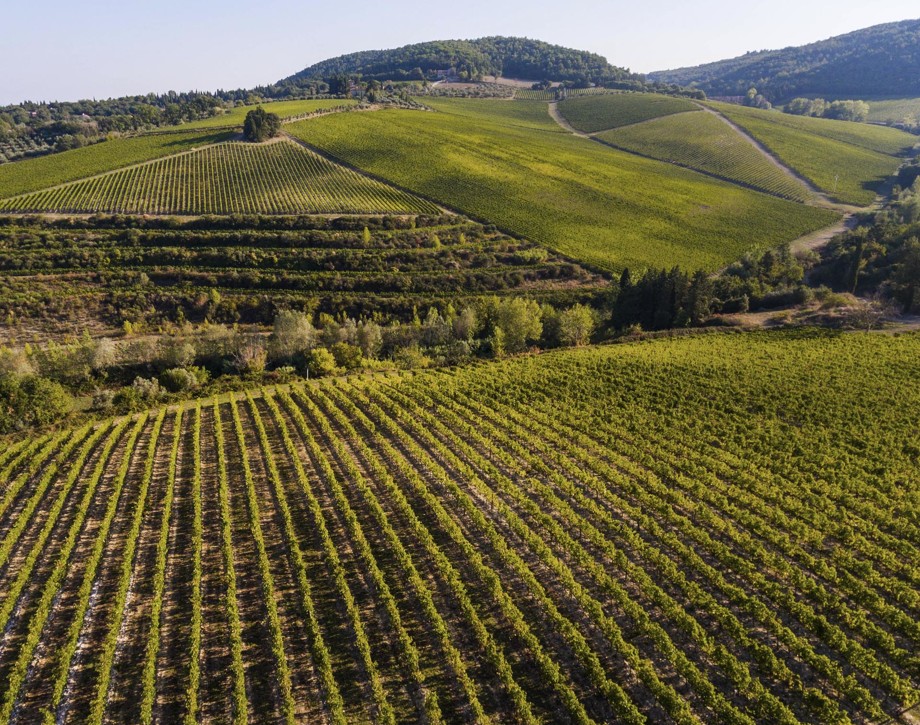Marchese Antinori

Climate
The 2013 vintage was characterized by frequent rains during the winter months and lower than usual temperatures during the spring. But burst took place from ten to fifteen days later than in an average growing season. The heat of mid-July accelerated the ripening of the grapes, which proceeded during the rest of the summer. The high temperatures and the excellent temperature swings from daytime heat to evening and nighttime coolness during the month of September led to a fine ripening of the crop. Picking, generally later than in previous vintages, began during the second half of September, on the 20th to be precise for the Sangiovese, while the Cabernet, instead, was harvested during the first week of October under climatic conditions which were absolutely ideal for the quality of the crop.
Vinification
Upon arriving in the cellars, the grapes were destemmed and the berries carefully selected on sorting tables and then pressed in a manner aimed at preserving all their aromas and components, a highly important phase both for the Sangiovese and for the Cabernet as well. Once in the stainless steel fermenting tanks, the must was macerated with soft extraction techniques in order to assure an extraction which was at the same time both intense and suitable for preserving elegance and suppleness in the texture. The fermentation itself lasted approximately a week and was followed by a nine or ten day period of skin contact. After being run off its skins, the wine went immediately into small oak barrels, principally of French oak, where it went through a complete malolactic fermentation which took place by the end of the year. The wine was then racked and, still separated on the basis of its vineyard source, was aged for approximately a year in French and Hungarian oak barrels. At the end of the aging period the wine was bottled and given an additional twelve month aging period in bottle in preparation for release.
Historical Data
The Tignanello estate is located in the heart of the Chianti Classico production zone, nestled between the valleys of the Greve and Pesa rivers, and extends over close to 800 total acres (319 hectares), some 130 of which (415 hectares) are planted to vines. The vineyards consist principally of the native Sangiovese grape along with such non-traditional varieties as Cabernet Sauvignon and Cabernet Franc. The Marchese Antinori is an historic wine of the Antinori cellars which, since 2011, is produced from the grapes of the Tignanello estate. It is a wine which presents itself as the full expression of the quality and elegance of the Sangiovese of this part of Tuscany.
Tasting Notes
An intense ruby red with purple highlights in color, the aromatic gamut of the 2013 Marchese Antinori ranges from ripe red fruit, with perceptible notes of wild cherries and cherries under spirits to tobacco, leather, and spices. The initial palate sensations are very soft with an excellent balance between tannins and acidity. The finish is richly flavorful and pleasurable and is quite lasting and sustained.
Awards
James Suckling 93/100 USA Wine Spectator 93/100 USA Wine Advocate 93/100 USA Antonio Galloni 91/100 USA Wine Enthusiast 89/100 USA

The Wine
This Antinori family’s historic label, since the 2011 vintage Marchese Antinori has been produced with grapes exclusively from the Tignanello vineyard. It’s made almost entirely with Sangiovese with a small percentage of other complementary varieties. A wine that fully expresses the quality and elegance of Sangiovese grapes grown in this area.

Climate
The 2013 vintage was characterized by frequent rains during the winter months and lower than usual temperatures during the spring. But burst took place from ten to fifteen days later than in an average growing season. The heat of mid-July accelerated the ripening of the grapes, which proceeded during the rest of the summer. The high temperatures and the excellent temperature swings from daytime heat to evening and nighttime coolness during the month of September led to a fine ripening of the crop. Picking, generally later than in previous vintages, began during the second half of September, on the 20th to be precise for the Sangiovese, while the Cabernet, instead, was harvested during the first week of October under climatic conditions which were absolutely ideal for the quality of the crop.
Vinification
Upon arriving in the cellars, the grapes were destemmed and the berries carefully selected on sorting tables and then pressed in a manner aimed at preserving all their aromas and components, a highly important phase both for the Sangiovese and for the Cabernet as well. Once in the stainless steel fermenting tanks, the must was macerated with soft extraction techniques in order to assure an extraction which was at the same time both intense and suitable for preserving elegance and suppleness in the texture. The fermentation itself lasted approximately a week and was followed by a nine or ten day period of skin contact. After being run off its skins, the wine went immediately into small oak barrels, principally of French oak, where it went through a complete malolactic fermentation which took place by the end of the year. The wine was then racked and, still separated on the basis of its vineyard source, was aged for approximately a year in French and Hungarian oak barrels. At the end of the aging period the wine was bottled and given an additional twelve month aging period in bottle in preparation for release.
Historical Data
The Tignanello estate is located in the heart of the Chianti Classico production zone, nestled between the valleys of the Greve and Pesa rivers, and extends over close to 800 total acres (319 hectares), some 130 of which (415 hectares) are planted to vines. The vineyards consist principally of the native Sangiovese grape along with such non-traditional varieties as Cabernet Sauvignon and Cabernet Franc. The Marchese Antinori is an historic wine of the Antinori cellars which, since 2011, is produced from the grapes of the Tignanello estate. It is a wine which presents itself as the full expression of the quality and elegance of the Sangiovese of this part of Tuscany.
Tasting Notes
An intense ruby red with purple highlights in color, the aromatic gamut of the 2013 Marchese Antinori ranges from ripe red fruit, with perceptible notes of wild cherries and cherries under spirits to tobacco, leather, and spices. The initial palate sensations are very soft with an excellent balance between tannins and acidity. The finish is richly flavorful and pleasurable and is quite lasting and sustained.
Awards
James Suckling 93/100 USA Wine Spectator 93/100 USA Wine Advocate 93/100 USA Antonio Galloni 91/100 USA Wine Enthusiast 89/100 USA

Tenuta Tignanello
The Tenuta Tignanello estate is in the heart of Chianti Classico, in the gently rolling hillsides between the Greve and Pesa river valleys. It extends over an area of 319 hectares (788 acres), of which about 130 (321 acres) are dedicated to vines. Two of the estate’s prized vineyards are on the same hillside, Tignanello and Solaia, on soils that originated from marine marlstone from the Pliocene period rich in limestone and schist.
Soil
Calcareous rocky soils with alberese (marl limestone) and marl.
















